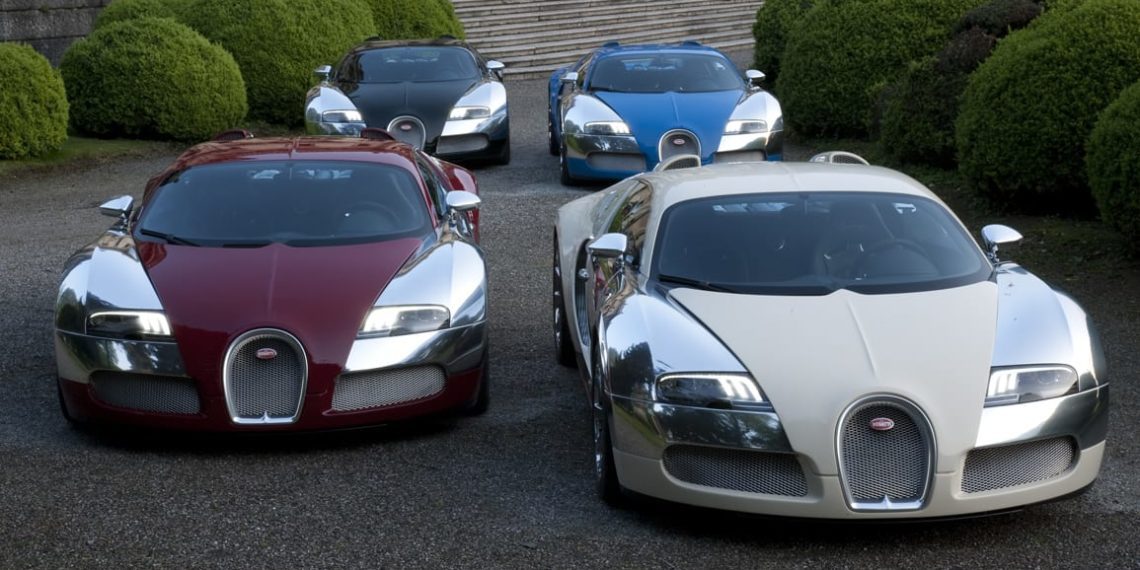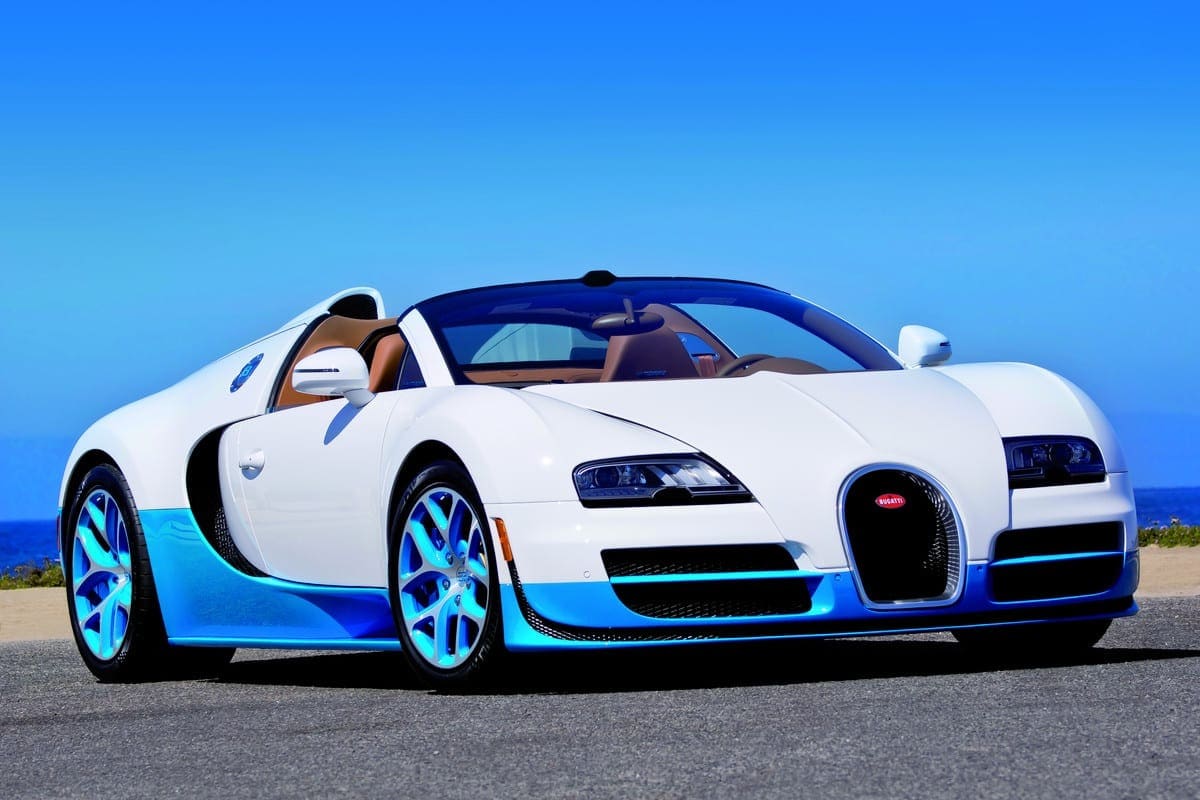Automotive engineers made incredible advancements in the last decade of the 20th century. The rise of powerful onboard computers and composite materials has been amassed by automakers around the world. With the idea of something that would shake the world, Volkswagen brought together the best ideas and people to revive Bugatti. The story of the Veyron involves a decade of production and laying low any preconceived notions of a street-legal supercar, but Bugatti’s story goes much further back. What began in 1909 was an iconic brand of high-performance cars by Ettore Bugatti. He built his cars in Molsheim, Germany, but after two World Wars, Molsheim was ceded to France. As a native of Italy, his brand truly unites Europe unlike any other.
Volkswagen acquired the rights to the name and the automobile company in 1998. This was unremarkable at the time, as automakers regularly deal in the rights of the past predecessors. Perhaps it was an image or statement held in the mind of Ferdinand Piech. One to show the world the full might of what was started by his grandfather, Ferdinand Porsche. Dr. Piech announced the Bugatti Veyron specs in 2000, and the World stood still. While they had a perfect W12 engine already in production, the Bugatti Veyron 16.4 needed more. So, it was designed around a sixteen-cylinder beast. The 488 cu. in. quad-turbocharged “W16” required no less than 10 radiators.
Bugatti Veyron Price
Many wondered how much currency or political influence would be needed to cover the Bugatti Veyron cost. We might not ever know the real investment it took, but Volkswagen reported a loss of $4.6 Million US Dollars on each example sold. This comes from the staggering amount needed to build a new factory near the old location. It had to be cleaner than an operating room to prevent imperfections in the carbon fiber. An autoclave capable of handling multiple chassis is the centerpiece. it is a place where workers with post-doctoral accomplishments assemble cars with white gloves. Those who ask how are shocked to know the original Bugatti Veyron price was $1.23 Million, or one million Euros. Before any options, the Bugatti Veyron MSRP was more than the median income in most nations. As the performance and demand increased, so did the price. The Bugatti Veyron Super Sport price was $2.5 Million US Dollars for each of the 30 examples.
CarMax Appraises Bugatti Veyron Mansory for Hilarious Price
Bugatti Veyron Review
I have been thankful to experience the Bugatti Veyron several times in my career. The word supercar can trigger anxiety about rough suspension or compromise in livability. Bugatti has none. If you take the wild looks and the Bugatti Veyron price out of the equation, it is a very drivable car. The cockpit is well insulated with great visibility. The controls and features are not complex, and the A/C can keep up with Florida heat. The only nod to the beast behind you is a unique, mellow exhaust note. Because it has 16 cylinders, you have a constant low rumble thanks to two cylinders firing simultaneously. Not only is it quiet, it offers a 2nd and 3rd order harmonic balancing. This is what engineers dream of. The one-piece carbon fiber body is stronger than any other, which prevents suspension or engine vibrations to reach the cockpit.
As long as you respect the accelerator, you would be hard-pressed to understand why the machine is so iconic. But if you choose a Veyron Review just to antagonize the skinny pedal, you will feel the wrath of 922 lb-ft of torque at all wheels. The subtle sounds erupt into a hellish 1,000 horsepower cacophony that makes Mount St. Helens sound like a nursery rhyme. If you aren’t scared of the car, be aware of how much attention it draws from other motorists. The Bugatti Veyron 16.4 and its progeny will evoke the best and worst in humanity just in its appearance, so get ready for a surreal experience!
Bugatti Veyron Specs:
- Engine: 8.0-liter W16
- Horsepower: 987
- Torque: 922 lb-ft
- 0-60: 2.4 seconds
- 1/4 Mile: 10.17 @ 139.44 mph
- Top Speed: 252.9 mph
- Transmission: 7-speed dual-clutch
- Weight: 4,147 lbs
What you see above is not hyperbole or journalistic license. The Bugatti Veyron acceleration abilities are almost untouchable. If you find yourself on a deserted highway at 3 am in Mexico, you know what must be done. Using the top-speed key in a special lock cylinder transforms the car. The suspension drops and the aerodynamics are engaged. Exhaust is opened and the turbos are spooled. Invoking launch control, the Bugatti Veyron 0-60 is gone in less than 2.5 seconds.
You can’t inhale due to 1.0 G pushing you into the seats. NHRA legends are left behind as the Bugatti Veyron quarter mile is eclipsed in 10.1 seconds. Passing 1,320 feet at 140 mph, you really begin to put the power down. Sure you could trade top speed for acceleration with more potent differential gears, but your Bugatti Veyron top speed will be reached just shy of 260 mph. The Bugatti Veyron weight is 4,147 lbs, and while that might seem heavy, you have to consider that it carries a 16 cylinder engine, and is propelled by 987 horsepower. As a result, the weight offers a nice road-hugging feel, while offering a power-to-weight ratio better than many fighter aircraft.
Bugatti Veyron Engine
Now we turn our attention to the elephant in the room. What makes the legendary ability of the Bugatti Veyron possible is its 8.0-liter engine. It is essentially two VR8 blocks sharing a crankshaft. This genius design traces its roots back to the legendary VR6. Cars like the Volkswagen Corrado, and the legendary Golf R32 gave the engineers the know-how of putting a large, powerful engine in a footprint that wouldn’t otherwise fit that size of power plant. The Bugatti Veyron engine takes that know-how to the absolute max. The Siamese bores pack eight cylinders under each head, with four camshafts operating the 64 valves. Having the same 3.39″ bore and stroke, the engine is a square design aimed at equal horsepower and torque. At wide-open throttle and top speed, the Bugatti Veyron fuel pumps are moving 1.4 Gallons Per Minute!

Because of the absolutely massive Veyron engine size of 8 liters, you will have a rather shocking 3 miles per gallon at 259 mph. The adaptive boost-pressure fuel injection adds a few pounds of fuel pressure for every pound of boost pressure. This prevents a lean condition since the intake has intercoolers just before the injectors. Running wide open will empty the 26-gallon Bugatti Veyron gas tank in 12 minutes, providing your tires are brand new. If your tires are not showroom fresh the car will not allow you to risk your life. Stop-go driving will offer 8 mpg in the city, and a wild 14 mpg under “normal” highway cruising.
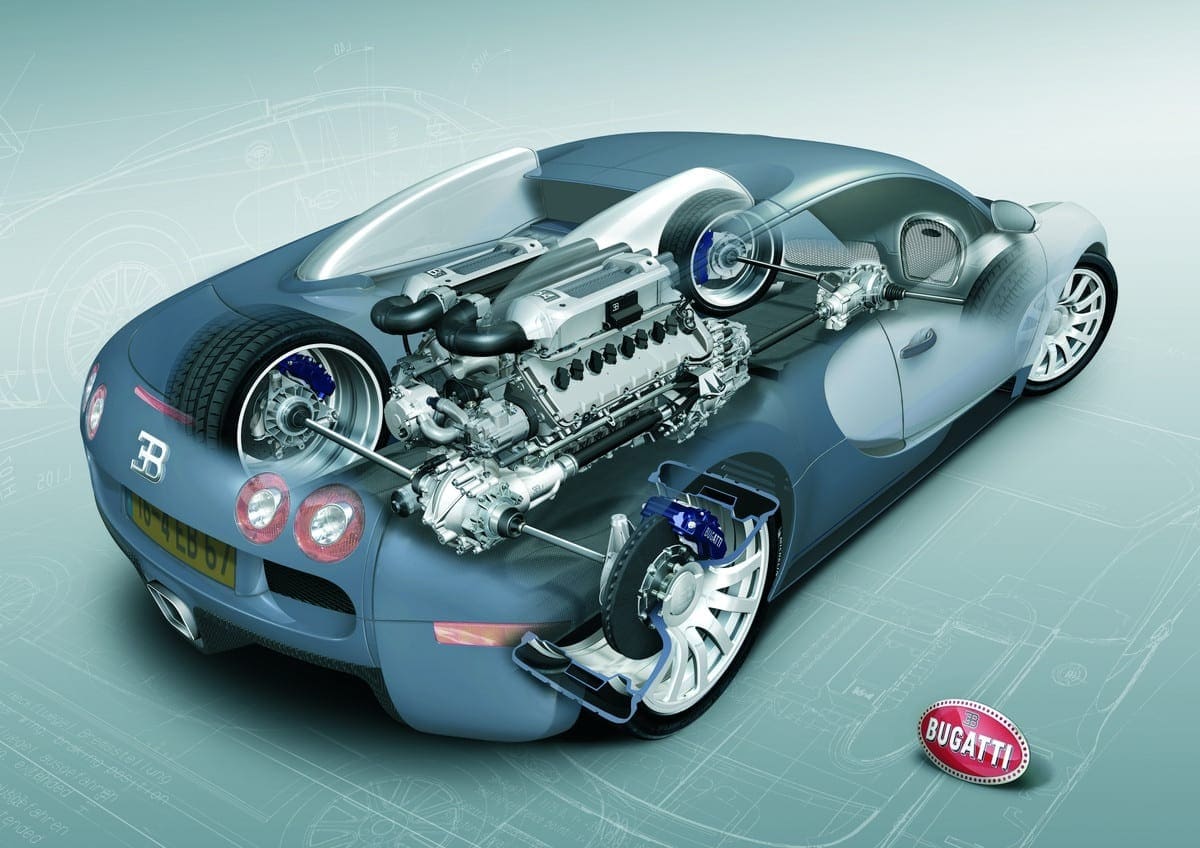
Fuel is constantly being circulated back to the tank to keep it cool, not unlike the systems of the SR-71 Blackbird. Oil is also in motion, traveling through the dry sump system and its own radiator. An oil change will cost $21,000 at the dealer because it takes calls for 27 hours of labor. The Bugatti Veyron has 9 drain plugs for the 60W oil. Being thick as molasses when cold, the unfortunate technician will be forced to drain the beast at operating temperature (230 degrees F).
Bugatti Veyron Engine Oil
Getting an oil change on a car like the Bugatti Veyron is an important and complex process. To access the drain plugs, a Bugatti technician needs to remove parts of the underbody, and then to refill the oil, the technician needs to remove the grille, fender liners, rear deck, and rear brakes, which takes a lot of skill and a lot of time. A Bugatti Veyron oil change takes several hours, and costs between $20,000 and $25,000. Fortunately, due to the fact that Bugatti owners drive their cars less frequently than most car owners, an oil change on a Bugatti is required less frequently as well. It is recommended that you get an oil change on your Bugatti once a year, to make sure fresh oil is in the engine, no matter how often you drive. This makes the Bugatti oil change price a bit more bearable, especially compared to what the car costs in the first place.
How to Do the $21k Bugatti Veyron Oil Change
Bugatti Veyron Transmission
What good is an amazing engine if the gearbox can’t handle it? While the Bugatti team found an answer for almost every problem in-house, they chose to outsource the 7-speed DSG automatic transmission (Direct Shift Gearbox) to Ricardo. Borg-Warner could have done it, but Ricardo has a long history building race-ready dual-clutch transmissions.
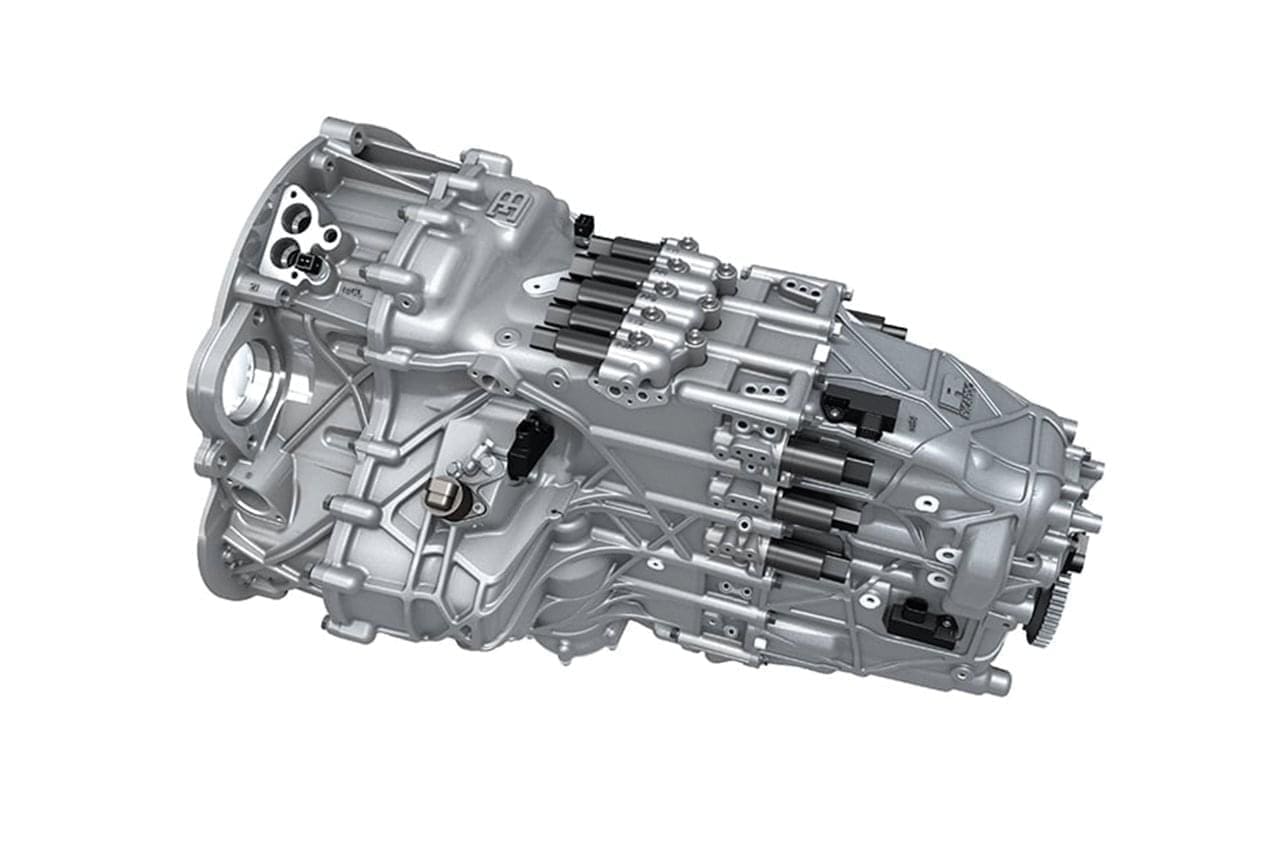
Bugatti claims that the electronics and diagnostics are designed to last the life of the car. In order to withstand the immense demands of sending such power to all wheels, the transmission fluid and differentials have their own cooling closed-loop cooling systems. If you somehow manage to detonate yours, Bugatti does not have individual components. Instead, they will offer you a new replacement for only $120,000! Trans-phobia has plagued many celebrities, but it will disappear once you are behind the wheel.
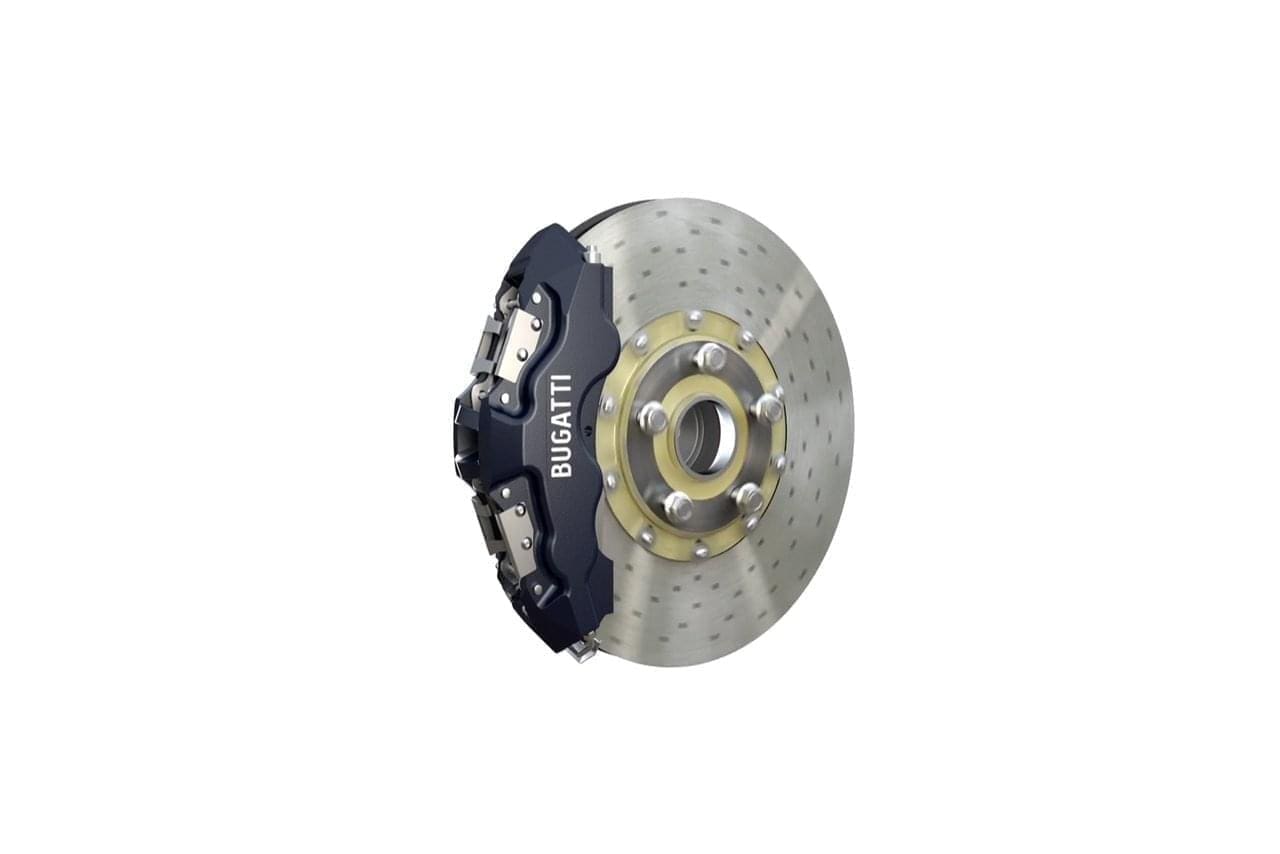
Bugatti Veyron Brakes
Stopping fast is more fun than going fast, so the Bugatti Veyron needs massive brakes. A slight tap of the pedal will turn the rear spoiler vertical. This one move is enough to smack you at triple-digit speeds, but the pedal also invokes the action of massive titanium calipers. They have a grip on 15.7″ carbon ceramic rotors up front and 15″ in the rear. Rotors the size of trash can lids can easily turn 350 mph into 3,272 degrees Fahrenheit. Bugatti Veyron brakes literally put a stop to the aftermarket’s ever-increasing sizes, but they come with one caveat. The price for new pads and rotors is more than your daily driver.
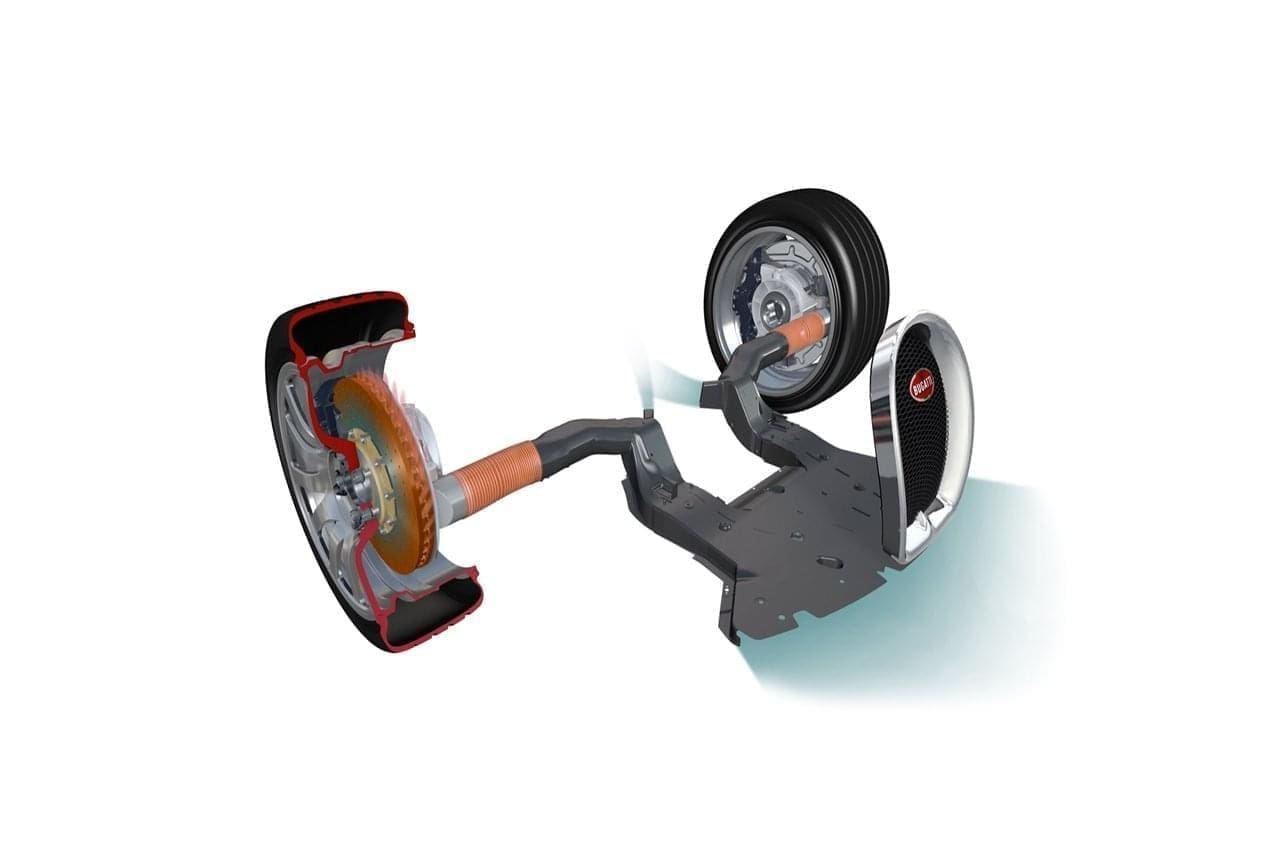
Bugatti Veyron Design
Taking cues from the 90’s Bugatti prototypes, Jozef Kaban penned the car’s striking design. The inspiration from Giorgetto Giugiaro in the Veyron is clearly evident, although sacrifices had to be made. Every fluid in a Bugatti is subject to extreme heat. The age-old battle between stylists and engineers resulted in a car with 10 radiators. The engine’s coolant requires the first three. They are sized to fit behind the grille openings. Because the car has four turbochargers, each bank has an intercooler inside the intake. They are cooled by another large heat exchanger. The final three dedicated circuits are for the engine, transmission, and differential oil. Each one has its own inlet and outlet hiding in plain sight.
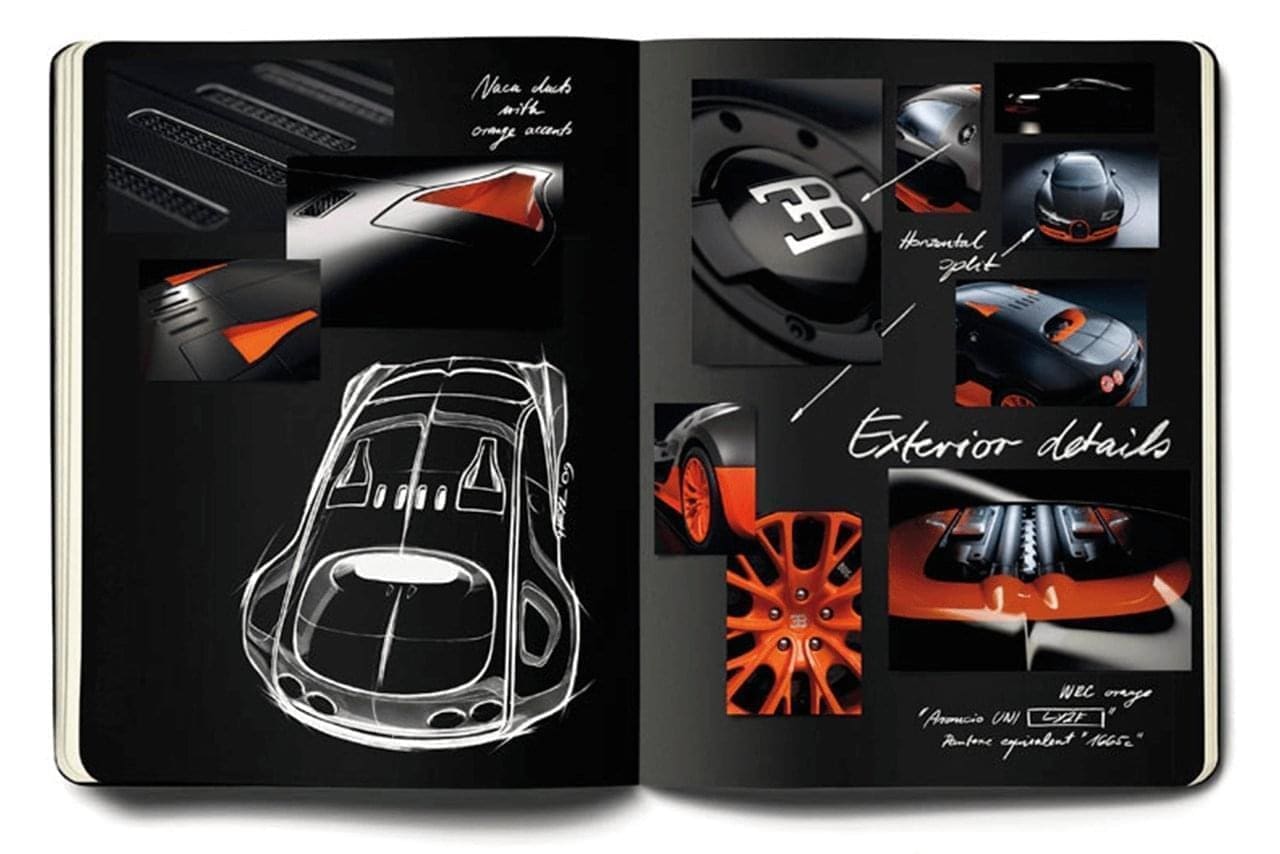
A beautiful curve begins along the door jamb and it evolves into the car’s beltline in the rear quarter-panels. Almost a parabola below the waist, it allows the cockpit to be incredibly strong without sacrificing ease of entry. Opening the door reveals a quite spacious and elegant interior. Machined aluminum, carbon fiber, and leather play off of each other to create a masterpiece. Symmetries in even the smallest details are just part of what makes the Bugatti Veyron amazing. What sets it apart from the other cars in this price bracket is visibility. The ample rear glass offers a better line-of-sight than many American sports coupes.
Bugatti Veyron Tires
When the average enthusiast asks how much is a Bugatti Veyron, the true fanatic wants details on the rubber. In order to hold together at 259 mph, Michelin went back to their drawing board. They had patented a high-speed run-flat design in 2000, but only Bugatti could afford to produce wheels for them. The genius of the Michelin PAX run-flat tire design is in its conical shape. The Bugatti Veyron boasts an incredible cornering ability, and it is due to conical wheels. The outer diameter of the wheel is 18″ and over 19″ inboard. Consequently, the tires can only be mounted to the wheels using a proprietary machine at the factory.
This one fact made even the wealthiest owners scratch their heads. If you don’t have a spare set ready to go, the tire replacement involves shipping all four to France. A shrewd negotiator must factor this into the Bugatti Veyron cost because nothing in the aftermarket will work. In keeping with the unique shape, the Bugatti Veyron tire size is also unlike any other. On the front wheels, you will find 265/680 R500 99 ZR(Y). This translates to 265mm wide, and 680mm in outside diameter.
Bugatti Chiron vs Veyron in Multi-Million Dollar Drag Race
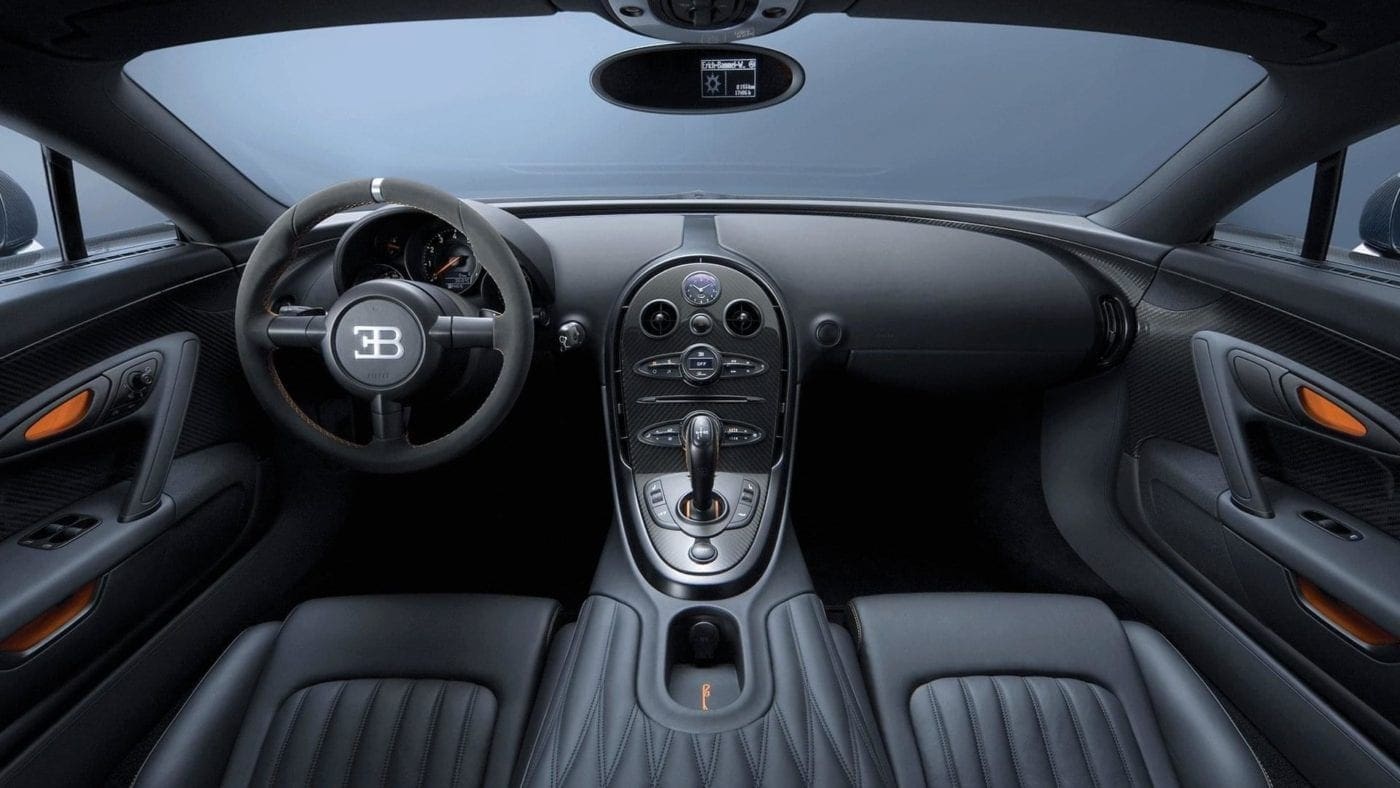
Bugatti Veyron Interior
Almost all supercars value the look of their interior above functionality. In order to provide comfort and luxury, the Bugatti Veyron features leather armrests, ergonomic controls, and supportive seats. The quality of materials to be seen and touched influenced the Bugatti Veyron cost from the beginning. When a customer asks how much is a Bugatti Veyron, the details of fit and finish justify the investment. In the case of the Bugatti Veyron Super Sport price, the racing-oriented cockpit allowed each example to soar in value compared to earlier examples. This is because the Bugatti Veyron MSRP was soon surpassed by pre-owned examples. Speculators made tidy profits by owning them for only a few months.
Bugatti Veyron Models
Bugatti Veyron 16.4
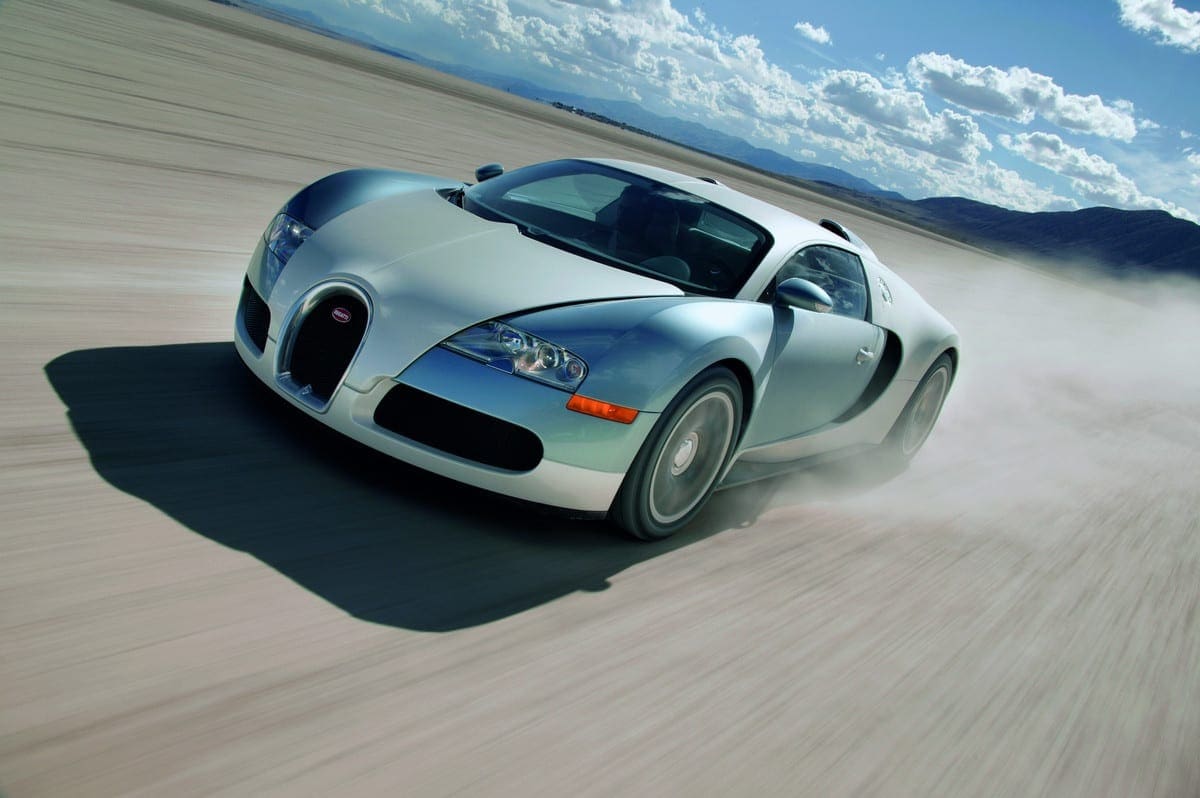
The first Bugatti of the modern era, the 16.4 alludes to sixteen cylinders and four turbos. After concept cars from brands across the Volkswagen Group tested the idea of a new supercar with the public, and more importantly tested and explored the logistics, engineering, and practicality of the unprecedented powertrain that the Veyron is known for, development began for the Veyron in 2000. However, the project was far ahead of its time. Intending to launch in 2004, the shakedown cars revealed minor issues. Squeaks and rattles would be acceptable in lesser brands, but Bugatti’s standards demanded that they go back to the drawing board, and as a result, the first Veyron production models were not completed until 2006.
Nothing like this had ever been attempted. Resurrecting a brand is a hardship unto itself. Coupled with the drive to smite every other production car, it is safe to say it appeared to be insurmountable. There has never been a new car launch with such success. The most compelling evidence is in the lack of fires or embarrassing recalls. What we witnessed is only possible thanks to extensive testing and sound engineering. Given these points, we probably won’t see an introduction like this for many years.
Bugatti Veyron 16.4 Specs:
Price: 1,230,000
0-60: 2.4 seconds
Top Speed: 259.9 mph
Horsepower: 1,001 HP (Metric)
Torque: 1,250 NM (Metric)
1/4 Mile: 10.17 @ 139 mph
Weight: 4,147 lbs
Production Numbers: 300
Bugatti 16.4 Grand Sport
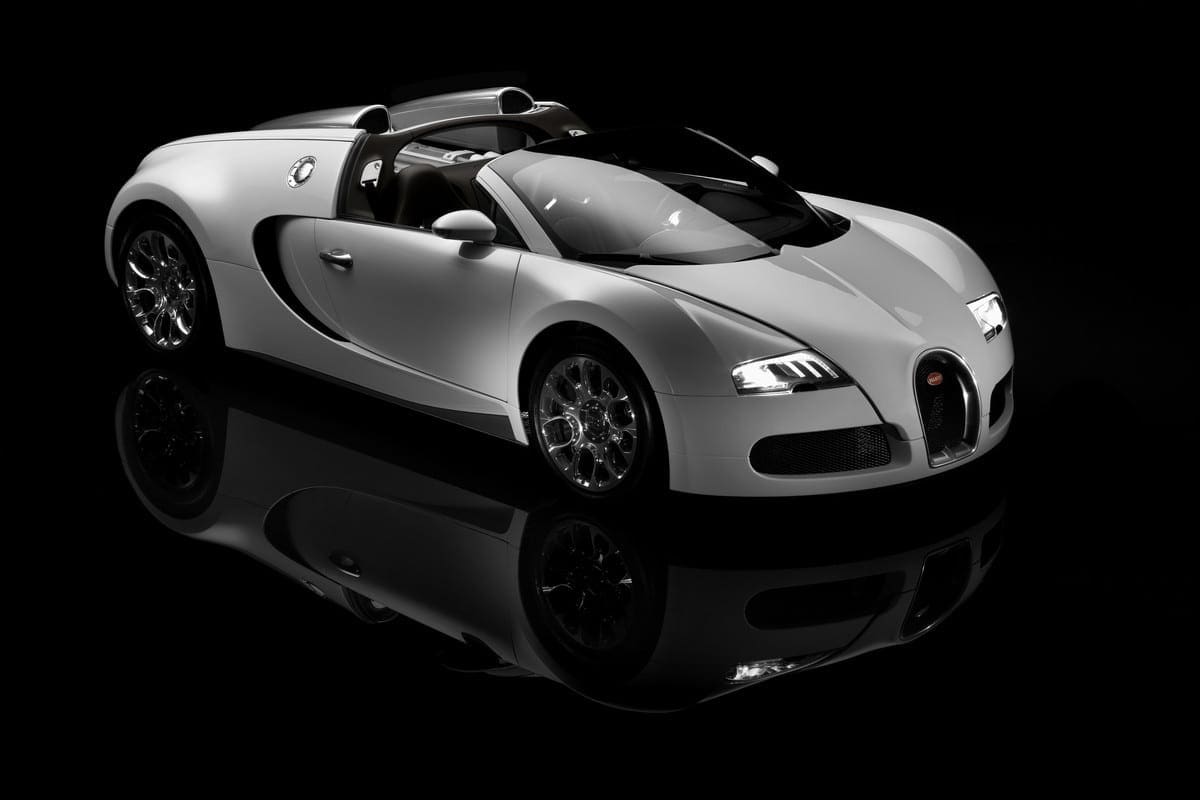
Innovation never sleeps, therefore engineers were not complacent to sit idle at Bugatti. In order to offer something for all supercar owners, they needed a convertible. Since the powertrain would not allow room for a conventional drop-top mechanism, a Targa roof was developed. Production began in limited numbers in 2009, and the final examples were finished in 2015.
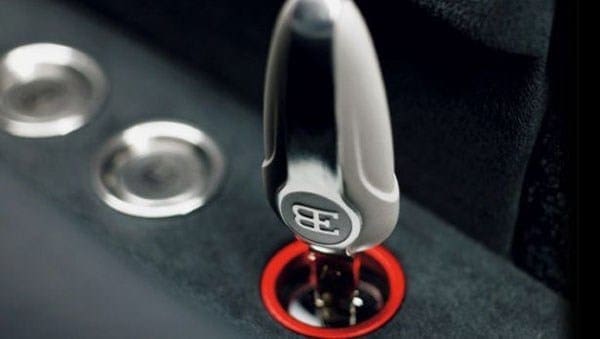
What makes them truly unique is that only 150 examples were built. Each one arrived with a removable hardtop that could be left at home on sunny days. In the event of light rain, the soft top was stored in the trunk. It consists of several hand-stitched layers of fabric held fast by an umbrella mechanism. Without the hardtop in place, the car withheld top speed to only 229 mph. Beyond this, aerodynamic turbulence would cause unstable situations. Extensive reinforcement to the chassis was needed, given that it was never envisioned as a roadster.
Bugatti Veyron Grand Sport Specs:
Price: $1,593,706
0-60: 2.2 seconds
Top Speed: 252 mph
Horsepower: 1,001 HP (Metric)
Torque: 1,250 NM (Metric)
1/4 Mile: 10.17 @ 139 mph
Weight: 4,387 lbs
Production Numbers: 150 The first 50 went to Bugatti customers
Special Editions of the Bugatti Grand Sport
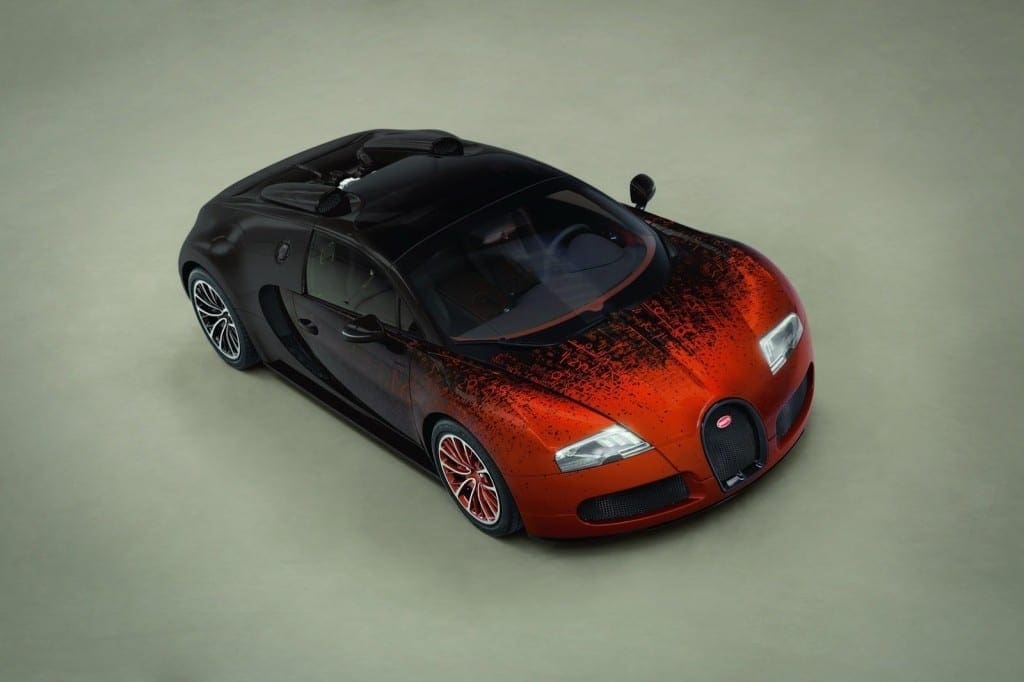
Bugatti Veyron Grand Sport Middle East Edition – 2011
It is no surprise that many Bugatti Veyrons call the Middle East home. So the factory decided to offer three unique examples of the Bugatti Veyron Grand Sport for sale. First was a yellow over black motif priced at $2,150,000. Next up is a navy blue over silver, and the final was brown & brushed aluminum. The last two had a retail price of $2,373,000 when ordered.
Bugatti Veyron Grand Sport Red Edition – 2011
Sometimes it is necessary to stop the wild orders and get back to basics. It is a far cry to call the Bugatti Veyron Grand Sport a normal car, but the color red is used to sell almost every mode of transportation. That is why the Red edition is a solid-color masterpiece. Everything from the wheel spokes to the seat stitching is red, and it looks straight out of hell!
Bugatti Veyron Grand Sport Sang Blanc – 2010
Matte white will never go out of style, and it was ordered by a customer in the UK. The Bianco Canopus Matte has black engine covers and wheels, along with other dark accents. As a true 1-of-1, it was ordered with an additional glass roof, sports seats, and diamond-cut 2-tone wheels.
Bugatti Veyron Grand Sport Sang Noir
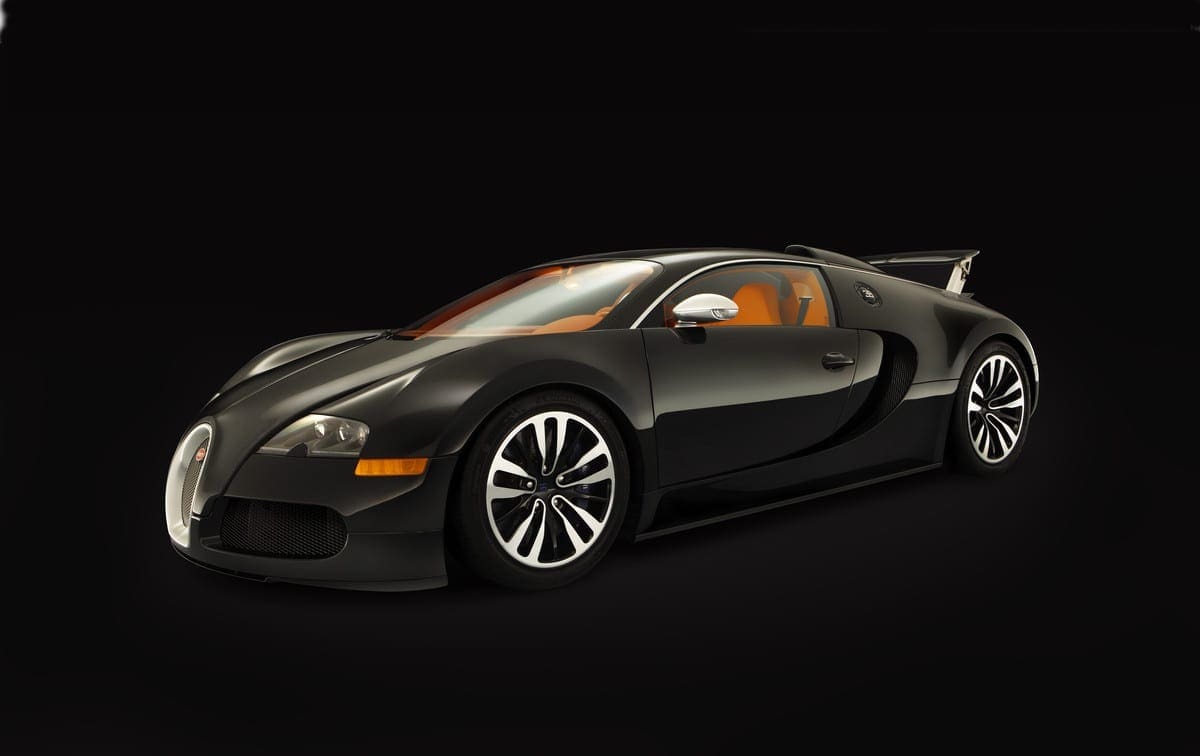
The heart of darkness, only 20 examples were produced! Those who wished to replicate the look were in for a shock. That is because a set of wheels are $120,000 each.
Bugatti Veyron Grand Sport by Bijan Pakzad – 2011
Another custom order, this car was specified by a dealer for Bijan Pakzad. The famed fashion designer behind the House of Bijan, he, unfortunately, passed away without driving it more than a few miles. His son has been seen cruising in the car to the hottest locations in Southern California.
Bugatti Veyron Grand Sport Soleil de Nuit – 2010
This one is the “sun of the night” and it blends dark blue metallic with brushed aluminum. Wheels are borrowed from the Sang Noir series, and they provide a rich contrast to the burnt orange interior. Commissioned for the 2010 Dubai Motor Show, it was intended to upset the Middle East supercar scene.
Bugatti Veyron Grand Sport Wei Long Edition 2012
China has a booming market for the world’s best cars, so the Wei Long edition was built for the Beijing Auto Show. Just in time for the Year of the Dragon, it was a collaboration between Bugatti and Konigliche Porzellan Manufaktur, the Royal Porcelain Company of Berlin. The exterior is as refined as the finest Chinaware, and it has an interior of Carmine Red leather. Handmade silk floormats and embroidered headrests are embossed with the dragon so you will not mistake it with another.
Bugatti Veyron 16.4 Super Sport
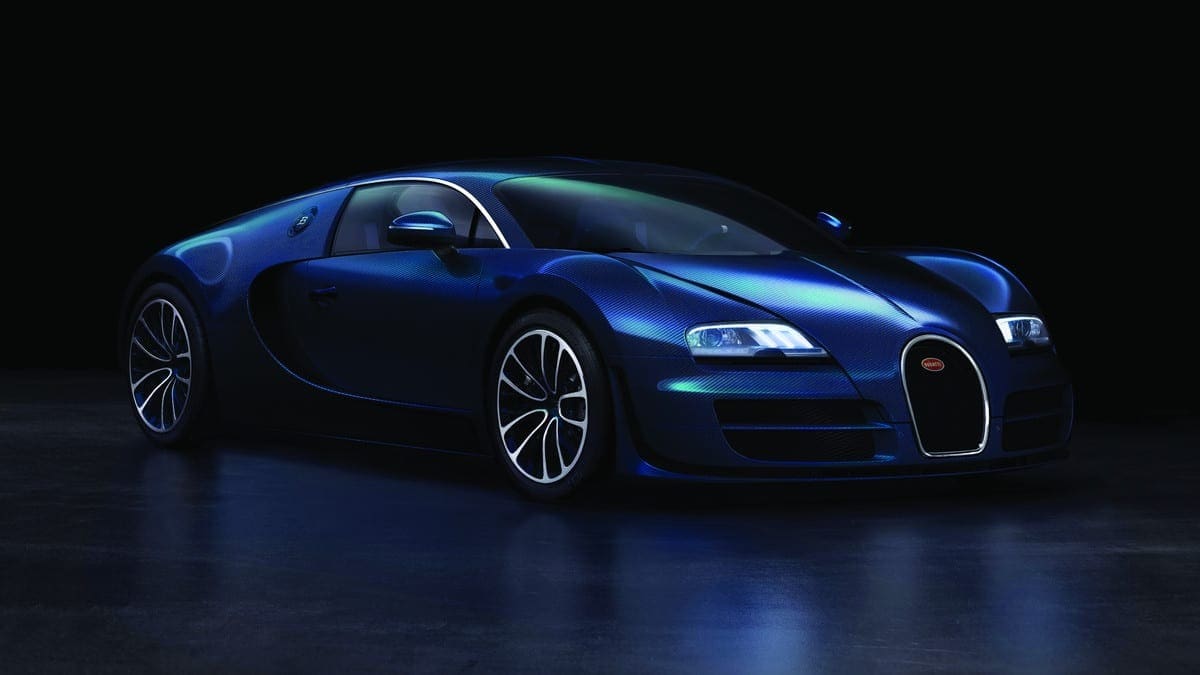
Once again, their engineers became restless. Pushing the envelope of design and aerodynamics, the Bugatti Veyron underwent a major facelift. The air scoops behind the cockpit were replaced by flat NACA ducts, with dual heat extractors on the roof. A rear spoiler that was easily defined on earlier models was made large enough to blend into the rear body. Not only does this make it look like an alien, but it preserves a central spine that looks almost reptilian. Along with a new roof spoiler and a front wind deflector, the comprehensive package was almost a new car. Larger turbos and intercoolers needed more air and more cooling because their goal was a healthy increase in power and the Bugatti Veyron Super Sport top speed. You might be surprised that the Bugatti Veyron Super Sport 0-60 is unchanged, that is because they reached the limit of the tires.
Bugatti Veyron Super Sport Specs
Price: $1,555,411
0-60: 2.4 seconds
Top Speed: 267.856 mph
Horsepower: 1,184 hp
Torque: 1,106 lb-ft
1/4 Mile: TBD
Weight: 4,044
Production Numbers: 30
Special Edition Super Sport
Bugatti Veyron Super Sport Black Carbon – 2011
One of the first production cars with visible black carbon fiber, this is another one built for the Chinese market. Every exterior part is covered in black carbon, which evokes a notion of a black hole on wheels. The interior is awash in snow beige and beluga black. The 2-tone approach is used on the seats, floor mats, and even the steering wheel. Black carbon also accents the doors and the center console on this 1 of 1 build.
Bugatti Veyron Super Sport Edition Merveilleux – 2011
Steeped in mystery, Bugatti’s management and technicians uploaded a video of this car rolling off the assembly line. CEO Wolfgang Durheimer wished a happy 40th birthday to a wealthy Chinese buyer named ‘Simon’.
Veyron Super Sport Le Saphir Bleu – 2012
Nothing conveys a feeling of mystery or intrigue like a blue sapphire. This work of art lives in London, and it wears baby blue in a wild pattern over a base of Sapphire blue paint. The contrasts play off of the car’s curves, which makes it appear to be coming at you from any angle.
Bugatti Veyron 16.4 Grand Sport Vitesse
All good things must come to an end, and so it was for the Bugatti Veyron. In order to build the fastest roadster of all time, a targa roof was added to the already potent Bugatti Veyron Super Sport. Because this one has the big engine and targa top, revisions to the chassis and aerodynamics were needed. Development began in early 2012, with the final production models delivered in 2015. A host of special editions and one-off examples were produced, and no detail was too small. This made the Bugatti Veyron Grand Sport Vitesse price among the most expensive Bugattis ever offered.
Bugatti Veyron Grand Sport Vitesse Specs:
Price: $2,157,700
0-60: 2.5 seconds
Top Speed: 233 mph (electronic limiter)
Horsepower: 1,200
Torque: 1,100 lb-ft
1/4 Mile: TBD
Weight: 4,938 lbs
Production Numbers: 92
Special Edition Grand Sport Vitesse:
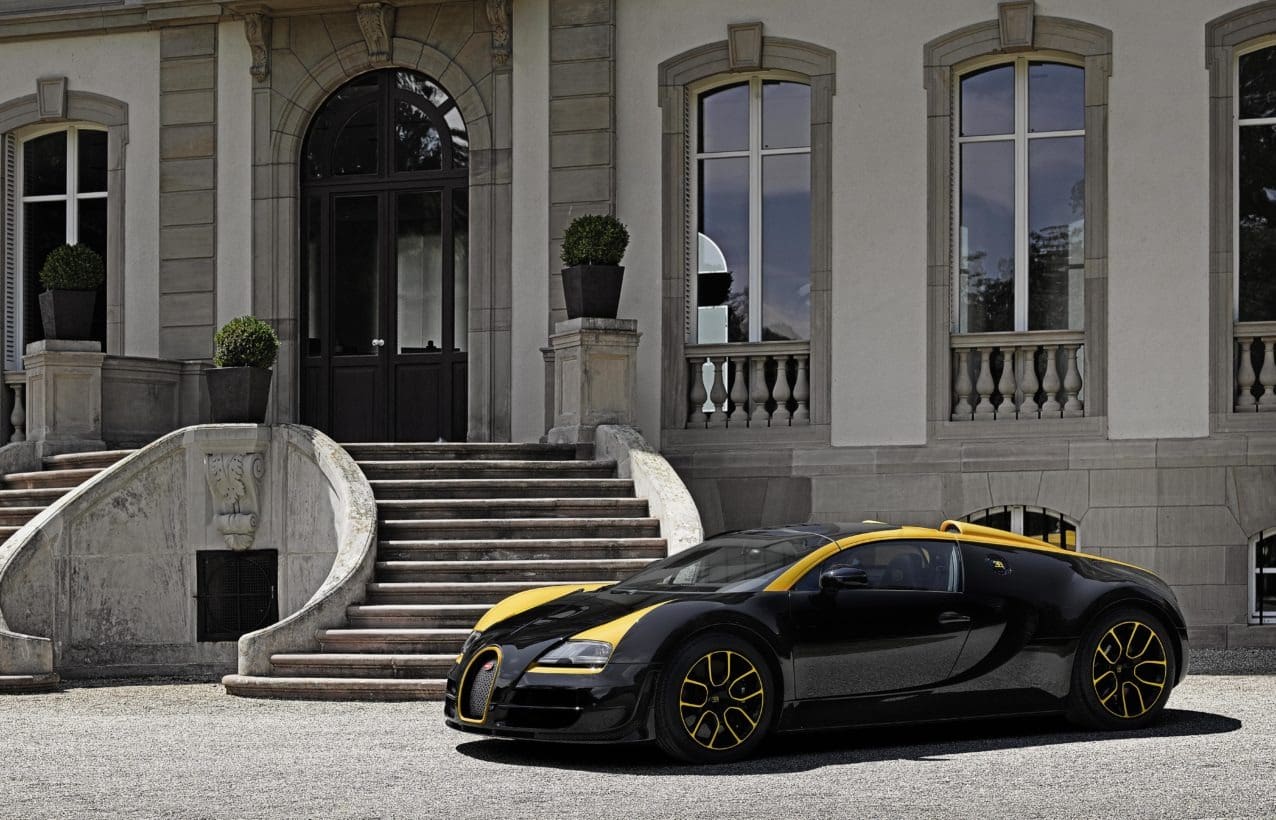
Bugatti Veyron 16.4 Grand Sport Vitesse
“1 of 1”
Bugatti Veyron Grand Sport Vitesse SE – 2012
This example was built in Bianco over New Light Blue, it was built to replicate an iconic 1928 Bugatti Type 37A. As the winner of several Grand Prix events, the original car is owned by our friend Jay Leno.
Bugatti Veyron Grand Sport World Record Car, WRC Edition – 2013
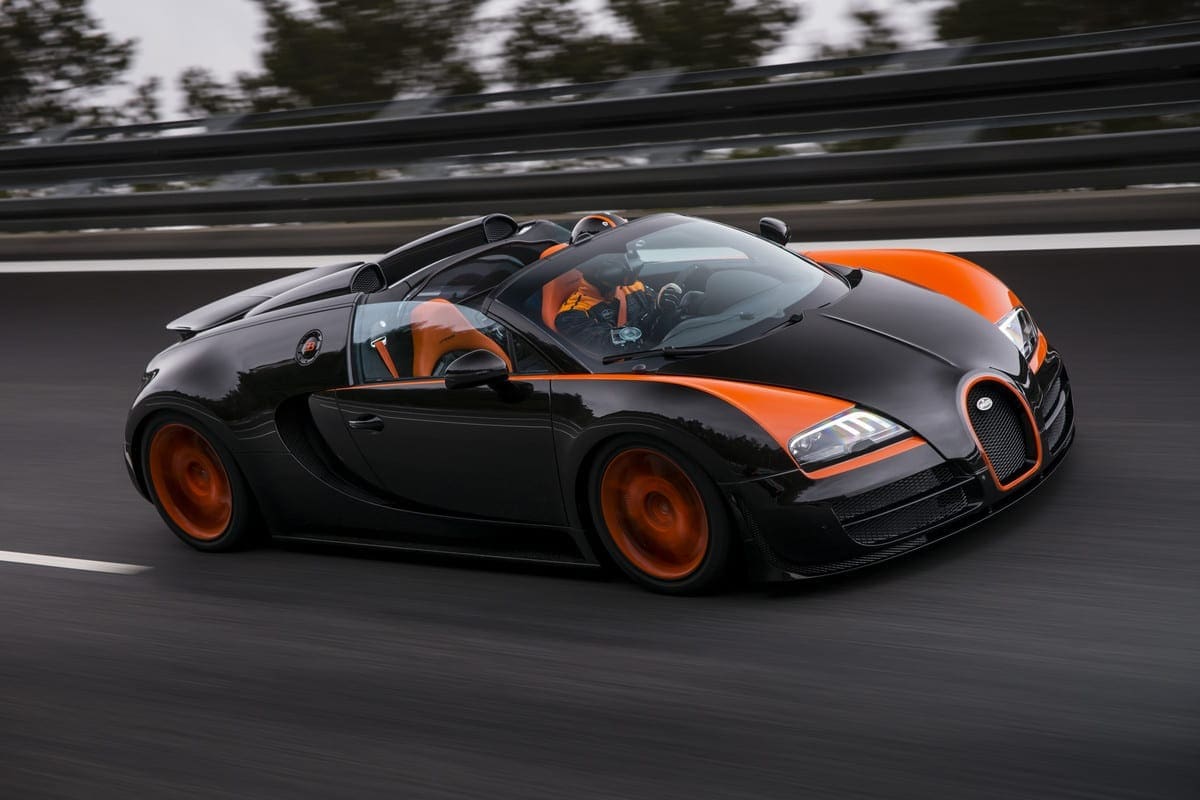
To commemorate the world record, eight examples were built. Each one has black carbon fiber with Arancia orange details. At least you have a solid alibi if you are clocked at 267 mph!
Veyron Grand Sport Vitesse Lang Lang Edition 2013
This special order was for famed Pianist Lang Lang. He chose ivory white and black to mimic the keys of a piano. It also is a heritage livery from the Type 57 Alante. The interior has white leather with black stitching, and the seams are in the shape of musical notes. His signature is found in gold on the center console.
Veyron Grand Sport Vitesse La Finale 2015
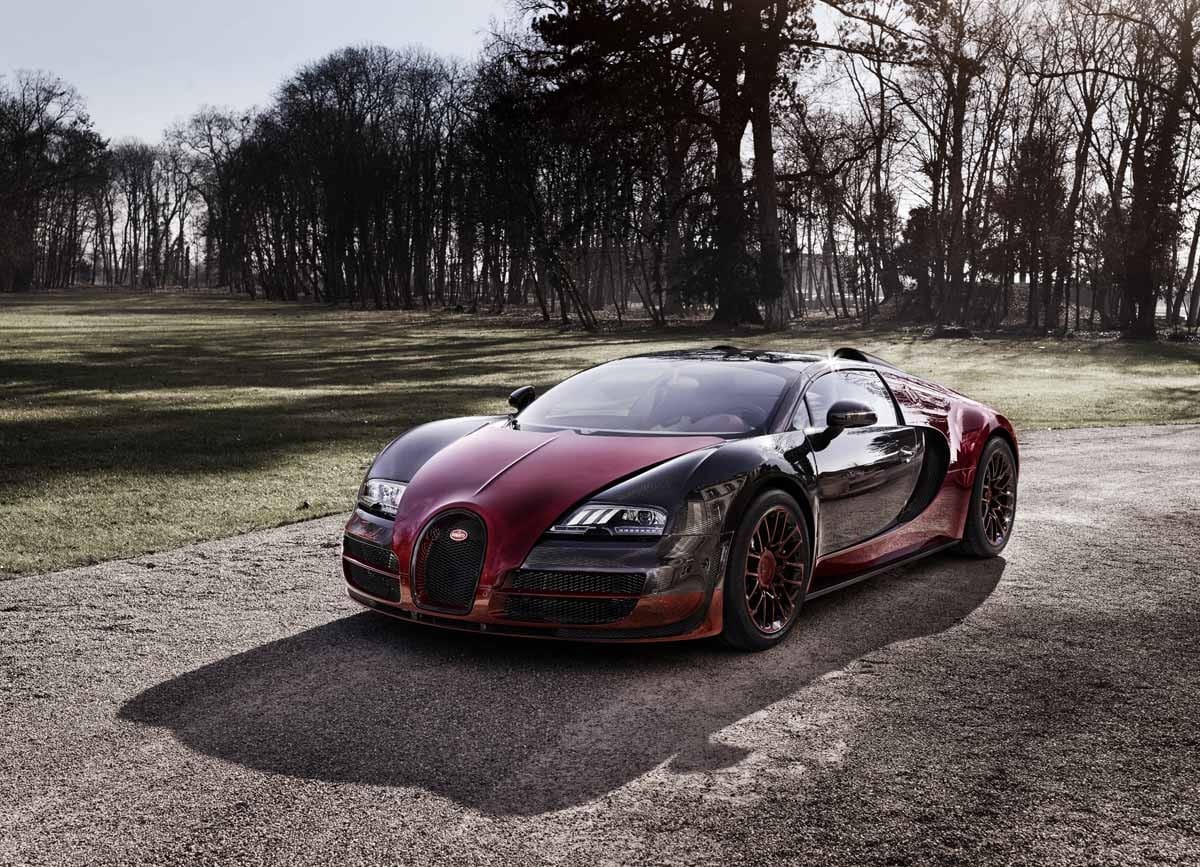
The last two examples of the Bugatti Veyron are the 150th roadster and the 450th coupe. They are both finished in red and black exposed carbon fiber. This replicates the solid colors of the first production Veyron, and they bring the total number of exposed carbon Veyrons to 8. A decade of production led to the last two cars being the first examples of red exposed carbon.
Bugatti Veyron Standout Features
Anything capable of these speeds gets hot. Four banks of four cylinders generate massive heat. The four turbochargers pressurize air, which generates heat. So let’s take a look at the cooling system in detail. The Veyron has 10 radiators, with the largest ones taking 15 hours to fabricate. First, the engine’s water pump circulates 10.5 gallons between the block, heads, and 3 radiators up front.
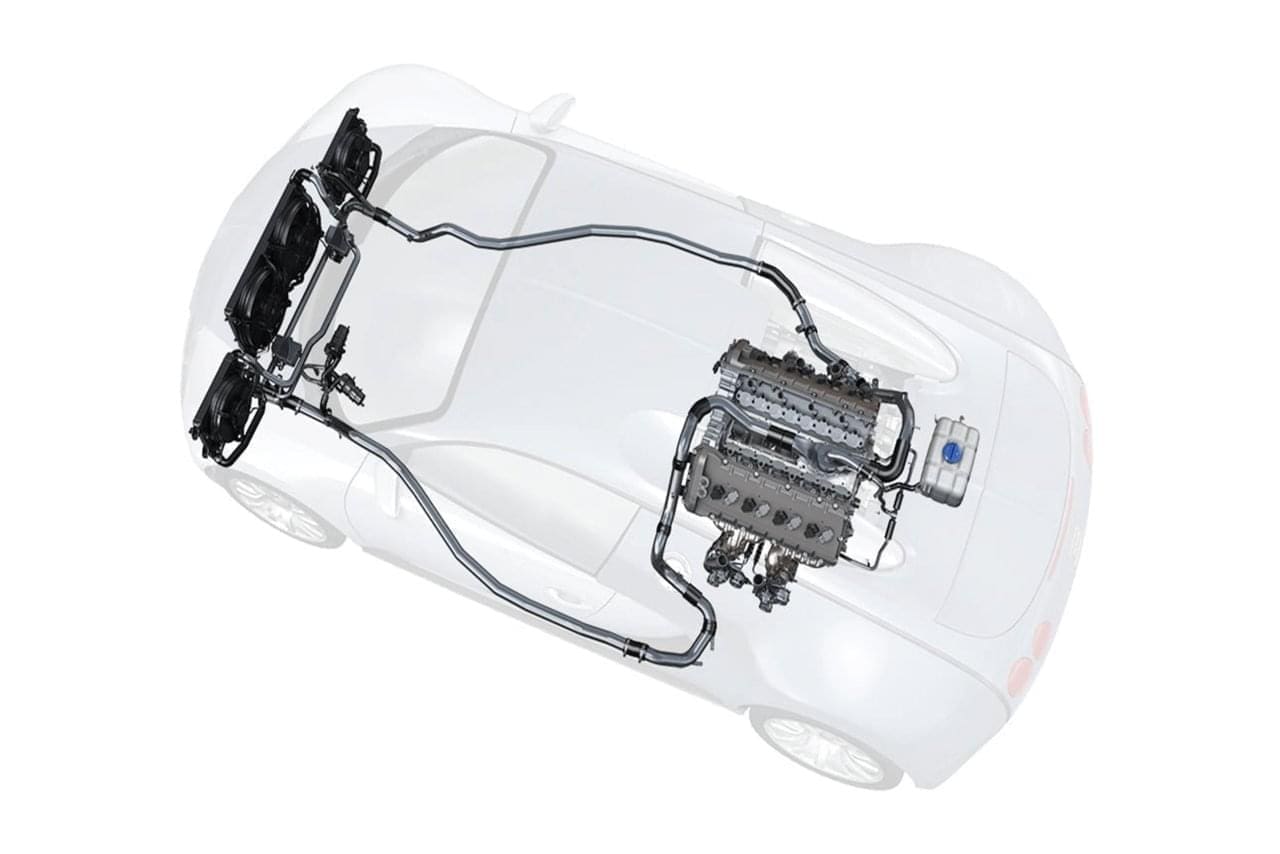
The next system that needs to be cooled is the intake manifolds. Each cylinder bank has its own intercooler to relieve the heat generated by the turbos.
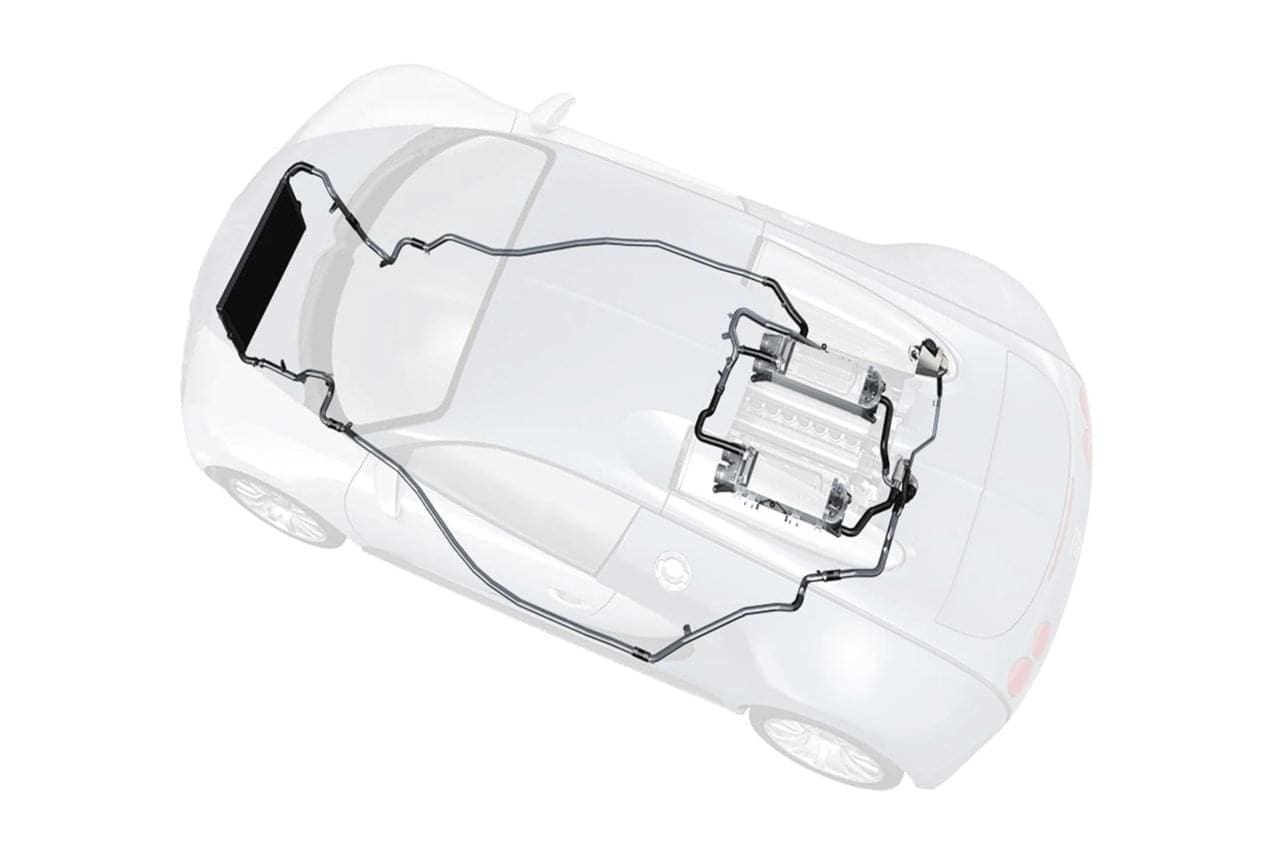
Of course, the Air Conditioning has a cooler, but it’s not a complex part of the system. The next critical component is the transmission’s cooling circuit.
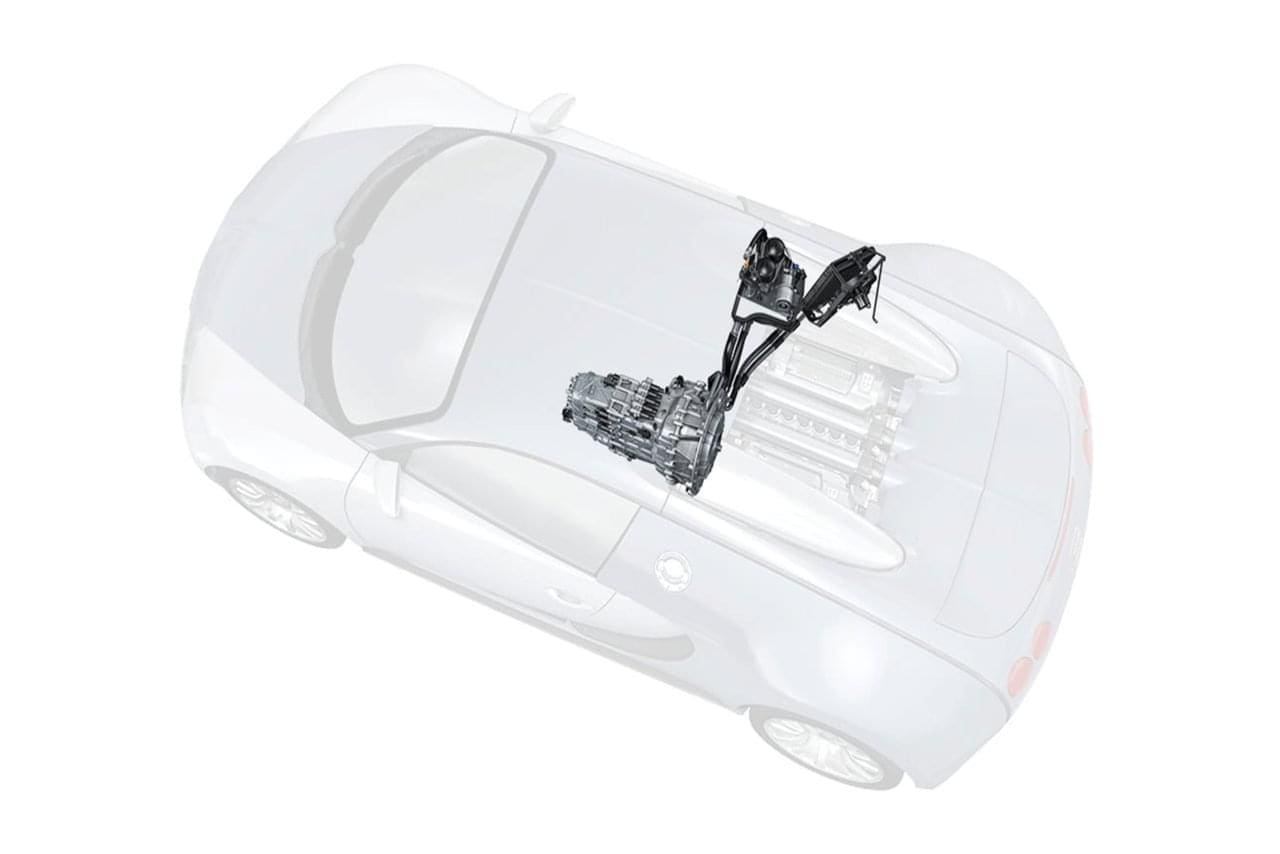
Because the Bugatti Veyron specs include all-wheel drive, the differentials need to stay cool under immense speed requirements.
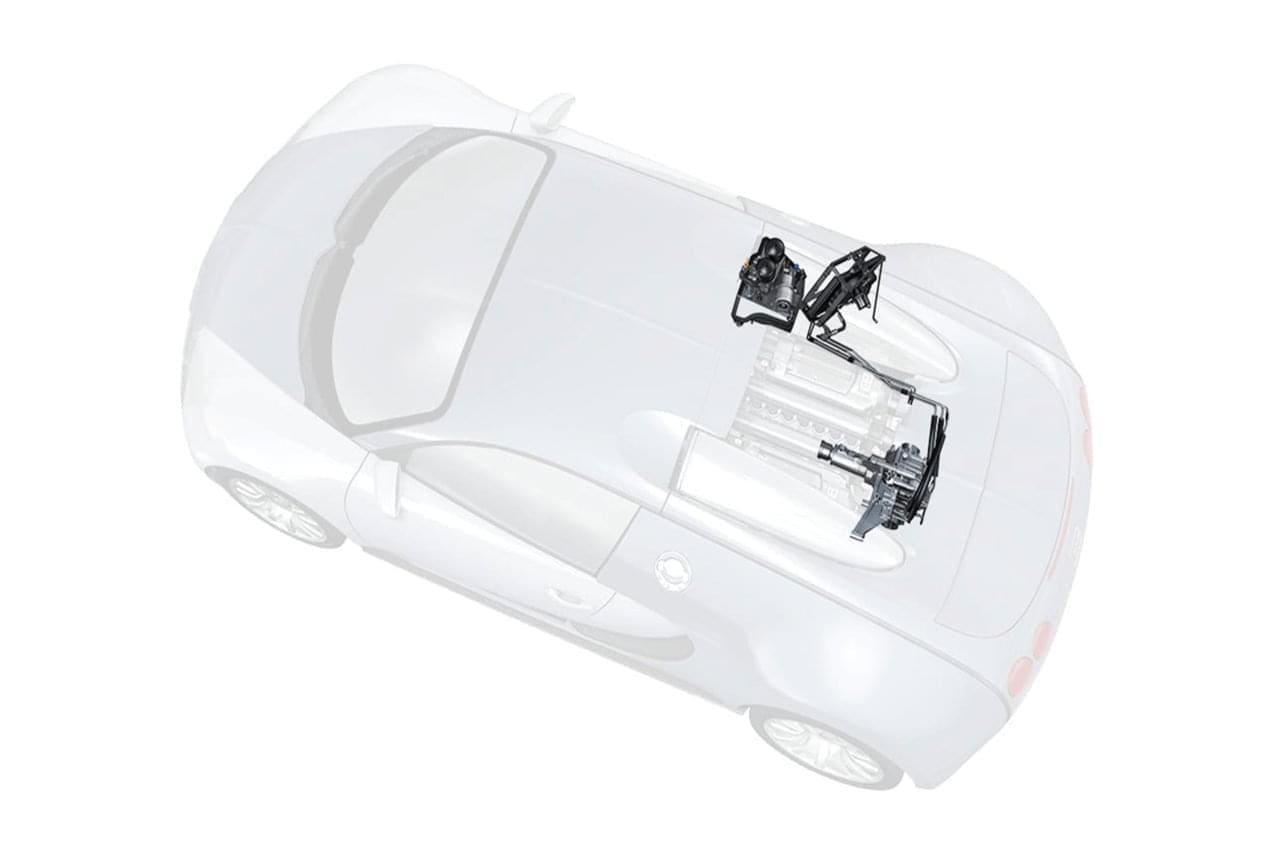
Finally, since you have a few gallons of 60-weight oil lubricating the 64 valves and 16-rod bearings, you will need an engine oil cooler.
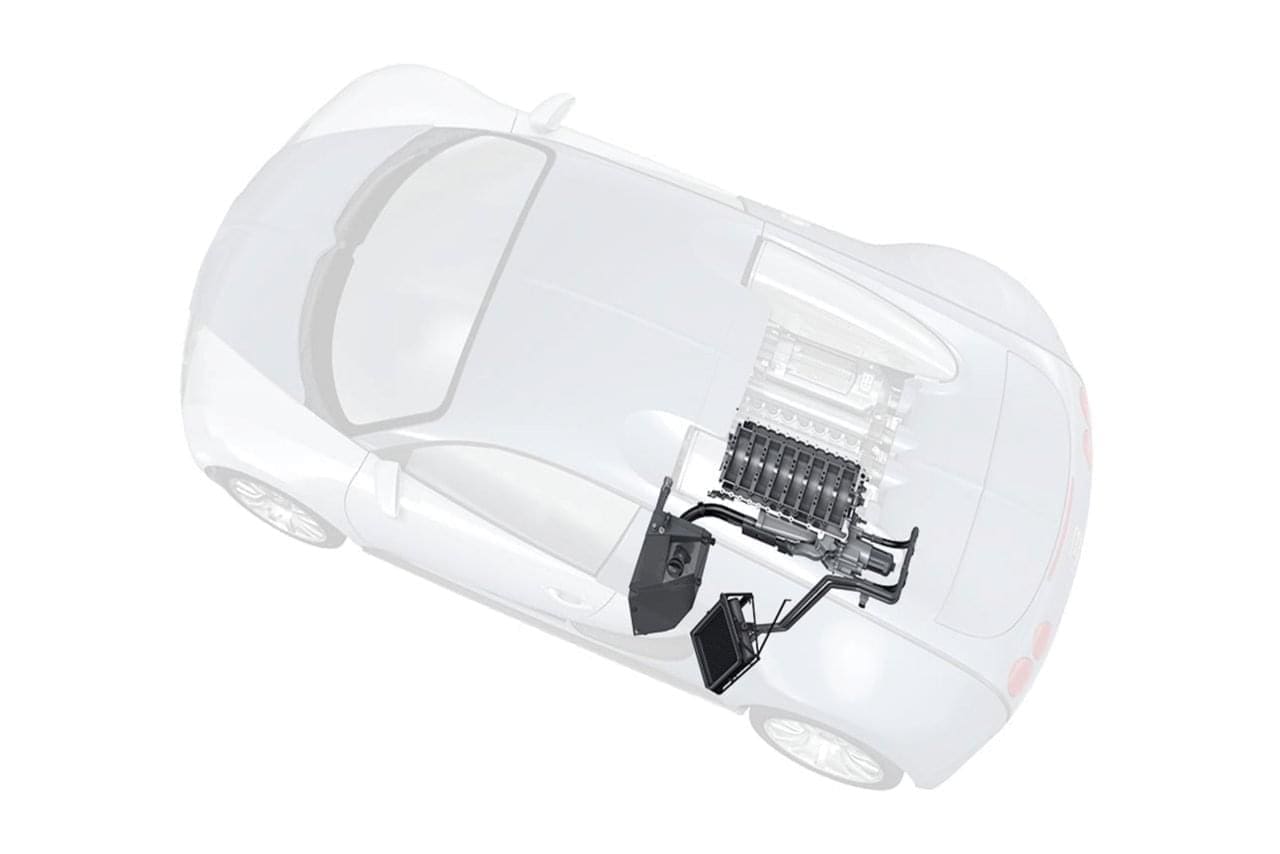
With all these systems being so close in proximity, there is no room to spare. With no room for error, Bugatti demands precise tolerances from the 3D realm to the finished product. Somehow they are still able to work in a hydraulic system for aerodynamics. This high-pressure circuit includes the front and rear spoilers, along with the ability to drop from 4.9″ to 2.5″ at an instant. Bugatti specs included the front grilles were originally designed in aluminum, but bird impacts would leave the primary radiator susceptible to birds. It was changed to stainless steel at the last minute, prompting Bugatti to mention that any impact would turn the unfortunate animal into “French Fries”.
Other wild options are one-carat diamonds on the speedometer and power gauge. Each one is cut with 16 facets for the 16 cylinders behind you. You can’t just bury the accelerator and hope to reach 253 mph. Located behind the driver’s seat is the top-speed lock cylinder. The Top Speed key must be inserted before an attempt. Doing so retracts the spoilers to only 2 degrees, closes the front diffusers, and locks out the steering wheel to only gradual turns. Of course, if the car doesn’t detect new tires, or if any of the fluids are not in the right range, your request will be denied.

